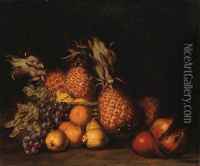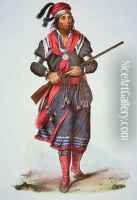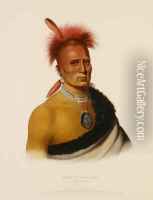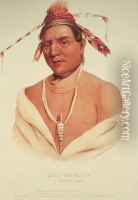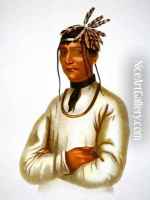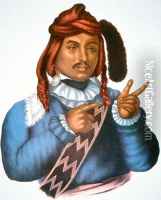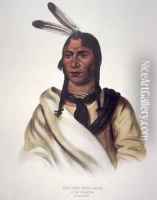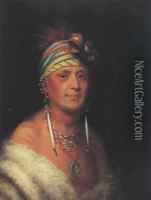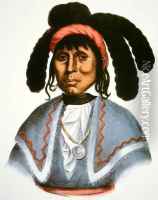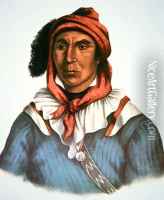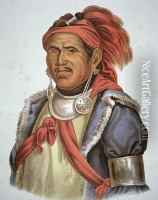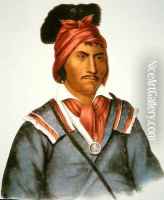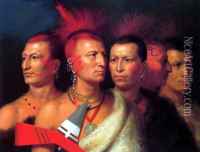Charles Bird King Paintings
Charles Bird King was an American portrait artist known for his depictions of significant Native American leaders and figures during the early 19th century. Born in Newport, Rhode Island, on September 26, 1785, he was the son of Deborah Bird and American Revolutionary War Captain Zebulon King. Charles Bird King displayed an early talent for art, which led to his studying under the renowned American painter Edward Savage in New York.
After his initial training, King went on to further his artistic education in London where he studied with the acclaimed American artist Benjamin West at the Royal Academy. This experience greatly influenced his style and his appreciation for classical and historical subjects. Upon his return to the United States, he settled in Washington, D.C., where he established a studio and became one of the most sought-after portraitists in the city.
King's most enduring legacy comes from his work on the Indian Gallery initiated by Thomas L. McKenney, head of the United States Bureau of Indian Affairs. Over the years, King painted more than 140 portraits of Native American leaders who visited Washington, which were later published as lithographs in 'History of the Indian Tribes of North America.' Unfortunately, many of the original paintings were destroyed in a fire at the Smithsonian Institution in 1865, which makes the surviving works and their reproductions particularly valuable.
Apart from his Native American portraits, King also painted many prominent figures of his time, including politicians, statesmen, and other dignitaries. His works are characterized by a keen attention to detail, vibrant colors, and an ability to capture the personality of his sitters.
King's contribution to American art history is significant not only because of his artistic talent but also for the cultural and historical record his works provide. His portraits remain an important source of information about the attire, ornaments, and appearances of Native American leaders in the early 19th century. Charles Bird King continued to paint until his death on March 18, 1862, in Washington, D.C. Today, his works can be found in various museums and collections throughout the United States, including the National Gallery of Art and the Smithsonian American Art Museum.

